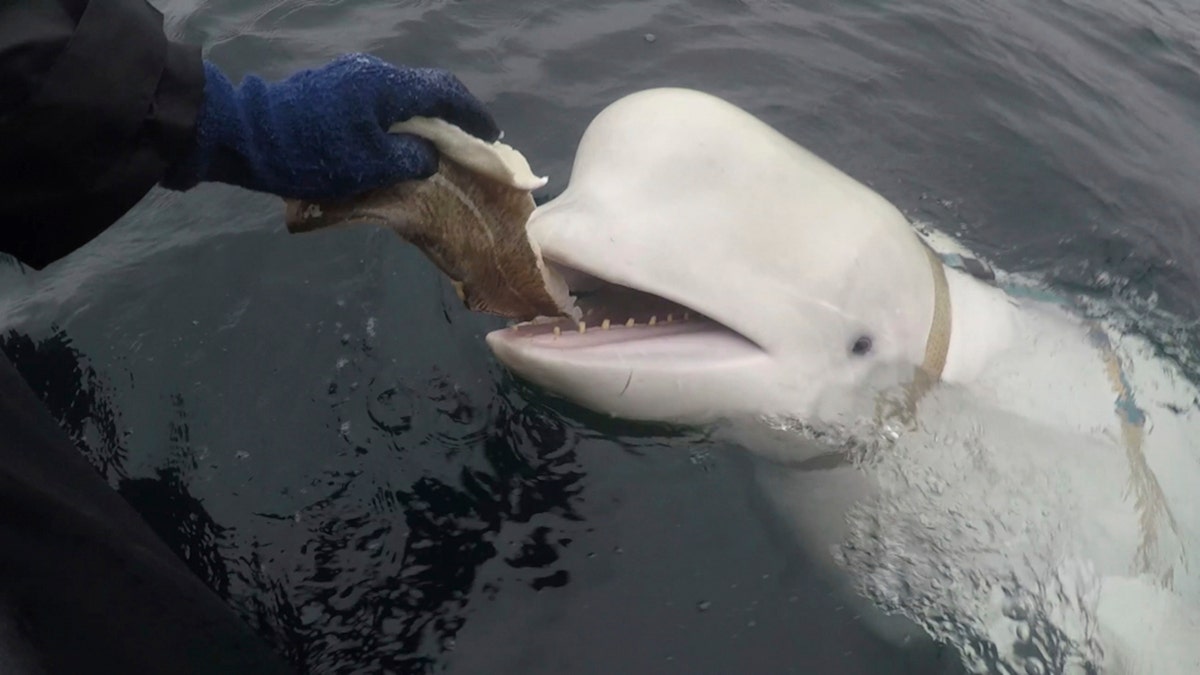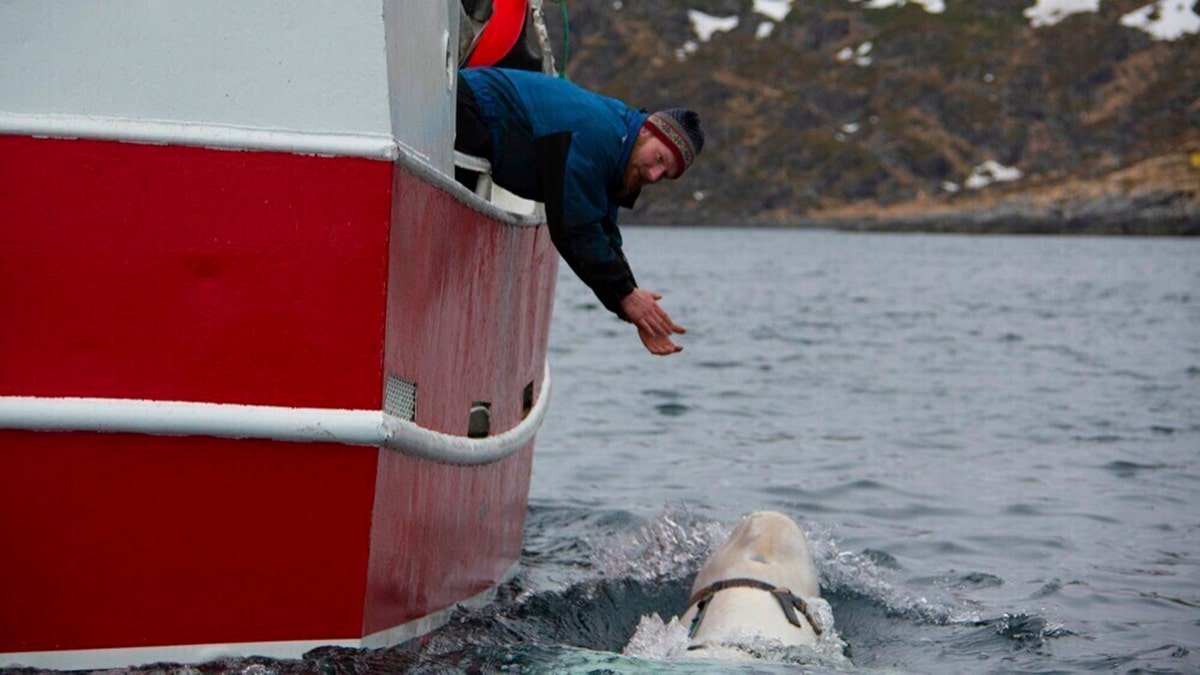INTERNACIONAL
From Marseille to Mont-Blanc: What to know about the journey of the Olympic torch to Paris

The Olympic torch will finally enter France when it reaches the southern seaport of Marseille on Wednesday. And it’s already been quite a journey.
After being lit on April 16 in Ancient Olympia, the torch was carried around Greece before leaving Athens aboard a three-mast ship named Belem, headed for Marseille.
OLYMPIC TORCH-LIGHTING CEREMONY EXPLAINED: WHAT TO KNOW AHEAD OF THE PARIS GAMES
The Belem was first used in 1896, the same year the modern Olympics came back. It will be accompanied by more than 1,000 boats as it parades around the Bay of Marseille, before arriving at the Vieux-Port, or Old Port, and docking on a pontoon resembling an athletics tracks.
Torch bearers will carry the flame across Marseille the next day, the last stretch running on the roof of the famed Stade Vélodrome, home to Marseille’s passionate soccer fans.
After leaving Marseille, a vast relay route will be undertaken before the torch’s odyssey ends with the opening ceremony of the Games on July 26 in Paris.
Here’s a look at where the torch goes before reaching Paris:
MONT-SAINT-MICHEL
The torch is due to reach the famed and visually stunning site of Mont Saint-Michel in Normandy on May 31.
Located in an area of raised land surrounded by water, the island fortress looks like it was created for a Game of Thrones film set. But it’s real, and very old.
Actress Mary Mina, playing high priestess, right, lights a torch during the official ceremony of the flame lighting for the Paris Olympics, at the Ancient Olympia site, Greece, April 16, 2024. The Olympic torch finally enters France when it reaches the southern seaport of Marseille on Wednesday, May 8, 2024, on an armada from Greece. After leaving Marseille, a vast relay route will be undertaken before the torch’s odyssey ends on July 27 in Paris. (AP Photo/Thanassis Stavrakis)
So old that it already existed during the Hundred Years’ War between England and France, from 1337 to 1453. An English attack was even fended off. Later it became a prison, and in 1979 it was named a UNESCO World Heritage Site.
Every years swarms of tourists are in awe of its raw and haunting beauty.
ACROSS THE OCEANS
The torch travel route is even more unique considering it takes a detour through France’s overseas territories called the Relais des Océans, or Ocean Relay. Riding the waves of the Atlantic, Pacific and Indian Ocean, it will be in French Guiana on June 9 before hitting New Caledonia on June 11.
Next is the island of Réunion at Saint-Denis — coincidentally the same name as the Paris suburb with the Olympic village — before reaching Papeete in the surfing realm of Tahiti, then Baie-Mahault in Gaudeloupe and finally Fort-de-France in Martinique.
The torch comes back to France on June 18 in the southern city of Nice.
FROM SEA BREEZE TO HEAVY CHEESE
Just five days after landing on French shores, the torch heads up the Alpine mountain pass of Chamonix-Mont-Blanc for Olympic Day on June 23.
The Haute-Savoie region is known for its outstanding Chamonix ski resort, which hosts World Cup races, for sweeping views across glacier fields to nearby Italy, and — some would say more importantly — as a producer of fine cheese.
A Cheese Olympics, should it be invented, would feature a sturdy crew of eight competitors from Savoie: Abondance, Beaufort, Chevrotin, Emmental, Reblochon, Tome, Tomme and the heavy-duty Raclette.
HEADING FOR PARIS
After leaving fromage-friendly Savoie, torch bearers will digest in the Doubs region of eastern France, and then visit the Alsace city of Strasbourg in the northeast.
Three days later the torch will reach Verdun, the site of one of the most horrific battles of World War I. From February to December 1916, more than 700,000 French and German soldiers were killed or wounded at the Battle of Verdun.
BASTILLE DAY ARRIVAL
The torch is to arrive on the streets of Paris on July 14 — hardly surprising, considering it’s Bastille Day, France’s national day.
The torch will stay the following day in Paris, then exit again before snaking back to the French capital via Versailles — home to the resplendent Royal Palace — and the suburbs of Nanterre on July 24 and Seine Saint-Denis on July 25.
From there, it’s to travel a very short distance back to Paris on July 26 for the grandiose opening ceremony where athletes will parade on more than 80 boats at sunset on the Seine River.
FINAL DESTINATION?
After the nearly four-hour ceremony ends shortly after 11 p.m., the cauldron will be lit at a location that is being kept top-secret until the day itself. Among reported options are such iconic spots as the Eiffel Tower and the Tuileries Gardens outside the Louvre Museum.
FLAME PROTECTION
A total of 10,000 people will carry the torch along its route. Local police forces on each section of the relay will help to ensure security is high, providing a security bubble around the torch and its carrier.
CLICK HERE TO GET THE FOX NEWS APP
ECO-FRIENDLY
The torches have a lower environmental impact than those used at previous Games. They burn biogas instead of propane and are recharged when fuel runs out.
Around 2,000 torches will be used compared to more than 10,000 before, according to Georgina Grenon, the director of environmental excellence at Paris 2024. The torches are made with recycled steel and not new aluminum.
INTERNACIONAL
Was a beloved whale suspected of being a Russian ‘spy’ killed in Norway?

Havldimir quickly became a celebrity in Norway, swimming his way into their Nordic hearts.
But this beluga whale’s odd story started in 2019 when he was discovered in northern Norway near the island of Ingoya wearing a harness with «Equipment St Petersburg» written in English connected to a mount for a small camera.
Hvaldimir, as Norwegians dubbed him – mixing together the Norwegian word for whale and Russian President Vladimir Putin’s name – was intelligent, friendly and responded to hand signals, leading Norway’s spy agency to believe he had been held in captivity by Russia and used for research purposes.
Once Hvaldimir was freed from his harness, though, his friendly personality made him beloved in the country.
CRITICALLY ENDANGERED WHALE SEEN OFF CALIFORNIA COAST: ‘EVERY SIGHTING IS INCREDIBLE VALUABLE TO US’
Hvaldimir was found in 2019 wearing a harness with a camera mount on it. (Jorgen Ree Wiig/Sea Surveillance Service/Handout/NTB Scanpix via Reuters/File Photo)
He was fed and monitored by the Norwegian government and dubbed a «free-swimming whale» by the Norwegian Orca Survey, venturing as far as Sweden but always returning home, according to The Telegraph.
Hvaldimir was found dead off southern Norway last weekend.
«It’s absolutely horrible,» marine biologist Sebastian Strand, who worked with Marine Mind, told Norwegian public broadcaster NRK. «He was apparently in good condition as of (Friday), so we just have to figure out what might have happened here.»
BREACHING WHALE CAPSIZES BOAT AFTER LANDING ON TOP OF IT OFF NEW HAMPSHIRE, SHOCKING VIDEO SHOWS

Hvaldimir, being fed here, became beloved in Norway. (orgen Ree Wiig, Norwegian Directorate of Fisheries via AP)
Hvaldimir may have died of natural causes, but conservation groups NOAH and One Whale have filed police reports claiming he was shot, according to the Telegraph.
The Oceanic Preservation Society said that a necropsy will be done on Hvaldimir to determine his cause of death in the next few weeks.
«We’ve been absolutely devastated over the news, and are deeply saddened that humanity failed this beloved whale,» the organization said on social media.

He was fed and monitored by the Norwegian government and dubbed a «free-swimming whale» by the Norwegian Orca Survey, venturing as far as Sweden but always returning home. (Jorgen Ree Wiig, Norwegian Directorate of Fisheries via AP)
Nonprofit Marine Mind said on Facebook that Hvaldimir «bridged the gap» between humans and wild animals in a way «few can.»
CLICK HERE TO GET THE FOX NEWS APP
«Hvaldimir was not just a beluga whale; he was a beacon of hope, a symbol of connection, and a reminder of the deep bond between humans and the natural world,» the organization said. «Over the past five years, he touched the lives of tens of thousands, bringing people together in awe of the wonders of nature. His presence taught us about the importance of ocean conservation, and in doing so, he also taught us more about ourselves.»
Reuters and the Associated Press contributed to this report.
-
POLITICA2 días ago
La represión a los jubilados, un espejo en el que duele reconocerse
-
POLITICA1 día ago
“Estúpido” y “exlibertario”: reapareció Cristina Kirchner y cruzó muy duro a Javier Milei
-
POLITICA1 día ago
Milei versus Cristina: el Presidente le responde a la exvicepresidenta en el Congreso del IAEF y habla sobre el dólar y el cepo
-
POLITICA2 días ago
Javier Milei planea exponer el Presupuesto en el recinto de Diputados y ya genera polémica con la oposición
-
CHIMENTOS2 días ago
La versión de Victoria Onetto sobre su «aventura» con Alberto Fernández
-
POLITICA2 días ago
Argentina – Chile, en vivo





























